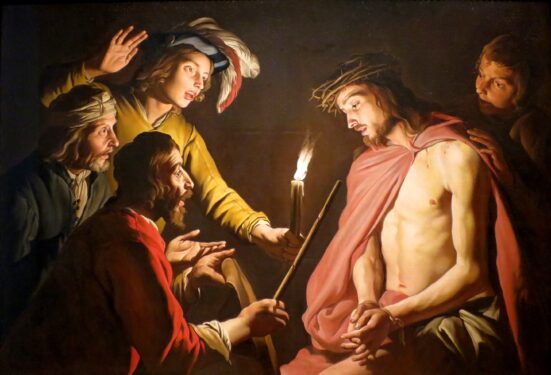
Reading both Pierre Teilhard de Chardin, S.J. and theologian John Haught on evolution and religious faith has been a joy and has caused me to reflect on many Christian mysteries. Indeed, I cannot think of any Christian mystery that does not have a place in the exciting vision of these two thinkers.
As a matter of fact, the view these two thinkers have of evolution as an ongoing drama almost can serve as an invitation to reflect more deeply on the basic truths of Christian revelation. In many ways the mystery of the Incarnation is the mystery that sheds most light on the theological vision of Teilhard and Haught.
However, the mysteries that have come into my mind perhaps more frequently than any others as I have been writing these columns have been the mysteries of the Church and of divine providence. My own faith in the Church is intimately related to the mystery of God’s providence. Concerning the mystery of the Church, Teilhard in his “The Divine Milieu” (New York: Harper & Row Publishers, 1960, pp. 144) writes the following:
“It is probable that the Church has been led at different times in the course of her existence, to emphasize in her general life now a greater care to collaborate in the earthly task, now a more jealous concern to stress the ultimate transcendence of her preoccupations. What is quite certain is that her health and integrity, at any given moment, depend upon the exactitude with which her members, each in their proper place, fulfill their functions which range from the duty of applying themselves to what are reputed to be the most profane of worldly occupations, to vocations which call for the most austere penances or the most sublime contemplation.
All those different roles are necessary. The Church is like a great tree whose roots must be energetically anchored in the earth while its leaves are serenely exposed to the bright sunlight. In this way she sums up the whole gamut of pulsations in a single vital and synthetic act, each one of which corresponds to a particular degree or a possible form of spiritualization.” (p. 75)
This is a beautiful view of the Church. At different moments in history the Church stressed different doctrines. I know that I have to remind myself that the Church exists in time. This would account for why in different periods of history different doctrines, moral teachings, sacramental practices might be emphasized. Many years ago I read a theologian who offered what I thought and still think was an important insight into the Church’s existence in time. The theologian pointed out that while the Church has received the fullness of Christian revelation, how much of that revelation reaches an individual Catholic depends on many realities.
Some of those realities would be the pope, the local bishop, the pastor and priests in the parish at which an individual Catholic worships, the theologians who are teaching and writing, and many other factors. While Christ is always present in his Church and while the Holy Spirit prevents the Church from teaching error as a doctrine of faith, two individual Catholics might have very different experiences of Catholicism. Members of the Church are influenced by other members of the Church. Of course, each Catholic is called to respond to the graces offered by God. We can be encouraged by recalling that God’s grace is superabundant while believing that we can influence one another for better or for worse. We know that God’s justice and love are not going to cheat anyone.
I find that the following comment by Father Teilhard speaks to my own experiences as a Catholic high school student and even as a seminarian:
“In their struggle towards the mystical life, men have often succumbed to the illusion of crudely contrasting soul and body, spirit and flesh, as though they were good and evil. But despite certain current expressions, this Manichean tendency has never had the Church’s approval.” (p.81)
In my own experience of Catholic education, I encountered some Manichean tendencies in teachers from time to time. The impression was created that matter was evil. How could that be if the Son of God became human and took on material flesh? I am not complaining or blaming those teachers who tended toward a Manichean view. My teachers taught me what they had been taught. I am just reflecting on how in the Church we have the opportunity to influence one another.
Authentic Catholicism, I believe, is a truly great religion and those of us who are Catholic should be grateful for God’s countless gifts that come to us through the Church. The Church should always be reforming, but that should not cause Catholics to forget the special graces and blessings that come through the Church.
Father Lauder is a philosophy professor at St. John’s University, Jamaica. He presents two 15-minute talks from his lecture series on the Catholic Novel, 10:30 a.m. Monday through Friday on NET-TV.
